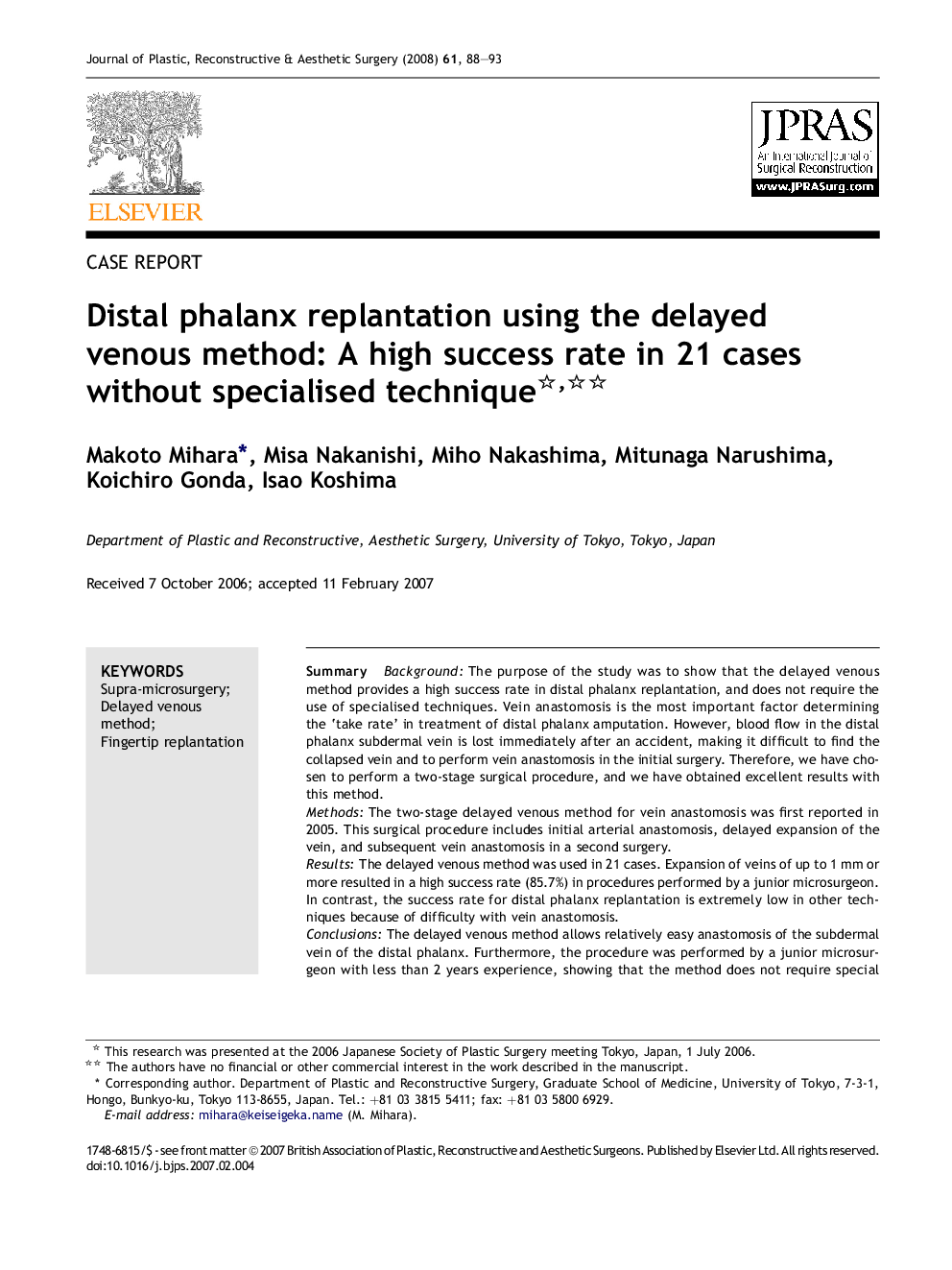| Article ID | Journal | Published Year | Pages | File Type |
|---|---|---|---|---|
| 4121020 | Journal of Plastic, Reconstructive & Aesthetic Surgery | 2008 | 6 Pages |
SummaryBackgroundThe purpose of the study was to show that the delayed venous method provides a high success rate in distal phalanx replantation, and does not require the use of specialised techniques. Vein anastomosis is the most important factor determining the ‘take rate’ in treatment of distal phalanx amputation. However, blood flow in the distal phalanx subdermal vein is lost immediately after an accident, making it difficult to find the collapsed vein and to perform vein anastomosis in the initial surgery. Therefore, we have chosen to perform a two-stage surgical procedure, and we have obtained excellent results with this method.MethodsThe two-stage delayed venous method for vein anastomosis was first reported in 2005. This surgical procedure includes initial arterial anastomosis, delayed expansion of the vein, and subsequent vein anastomosis in a second surgery.ResultsThe delayed venous method was used in 21 cases. Expansion of veins of up to 1 mm or more resulted in a high success rate (85.7%) in procedures performed by a junior microsurgeon. In contrast, the success rate for distal phalanx replantation is extremely low in other techniques because of difficulty with vein anastomosis.ConclusionsThe delayed venous method allows relatively easy anastomosis of the subdermal vein of the distal phalanx. Furthermore, the procedure was performed by a junior microsurgeon with less than 2 years experience, showing that the method does not require special training. Therefore, it is a useful operative technique for treatment of amputated fingers by a non-specialised plastic surgeon.
